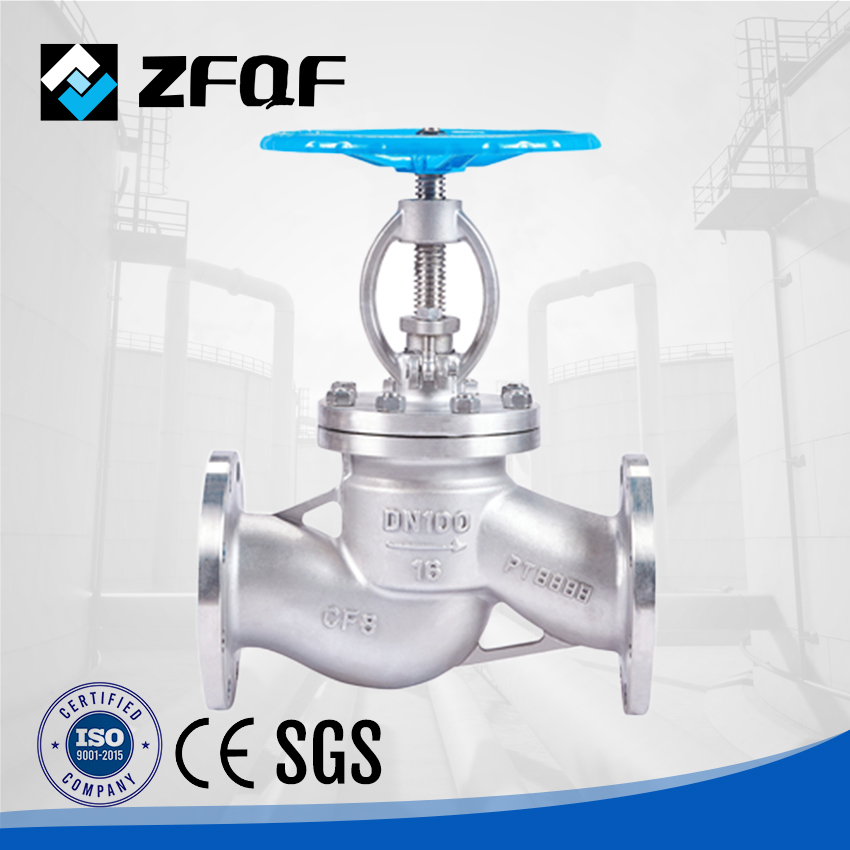The design of the globe valve is for low-inlet and high-outlet, with the aim of minimizing flow resistance and making it easy to operate when opening the valve. At the same time, when the valve is closed, the gasket between the valve body and the valve cover and the packing around the valve stem are not under stress. This reduces the likelihood of long-term exposure to medium pressure and temperature, extending the valve’s lifespan and reducing the chance of leaks. Additionally, this design allows for the replacement or addition of packing while the valve is in the closed position, facilitating maintenance.
Many people believe that globe valves are always designed with low-inlet and high-outlet, but that’s not always the case. In general, globe valves are designed with low-inlet and high-outlet, but there are exceptions, such as:
High-pressure globe valves with a diameter greater than 100mm
Due to the poor sealing performance of large-diameter valves, adopting a high-inlet and low-outlet configuration increases the sealing effectiveness by having the medium pressure act on the valve disc from above.
Two globe valves in series on a bypass pipeline, where the second valve requires a “high-inlet and low-outlet” configuration
This setup is used to ensure tightness during a maintenance cycle, balancing the pressure before and after the main valve to facilitate easy operation and reduce wear. It also serves other purposes like warming the pipe with a small flow during startup.
Boiler exhaust and venting globe valves
These valves, used only during the boiler startup process, have a low frequency of operation. To improve tightness and reduce substance loss, some power plants install these valves in a “high-inlet and low-outlet” orientation.
Electromagnetic quick-closing valves
These valves are designed for rapid shutdown and cutting off fuel supply. If the substance enters from the bottom, the force exerted on the valve disc is greater than the force produced by the electromagnetic valve’s weight, ensuring effective shutdown.
In general, for large-diameter and high-pressure conditions, using a low-inlet and high-outlet configuration makes closing the valve more challenging. Adopting a high-inlet and low-outlet configuration reduces stress on the valve stem, enhancing the valve’s safety and sealing effectiveness. It also offers cost savings for manufacturers and users by allowing for a smaller valve stem diameter.

